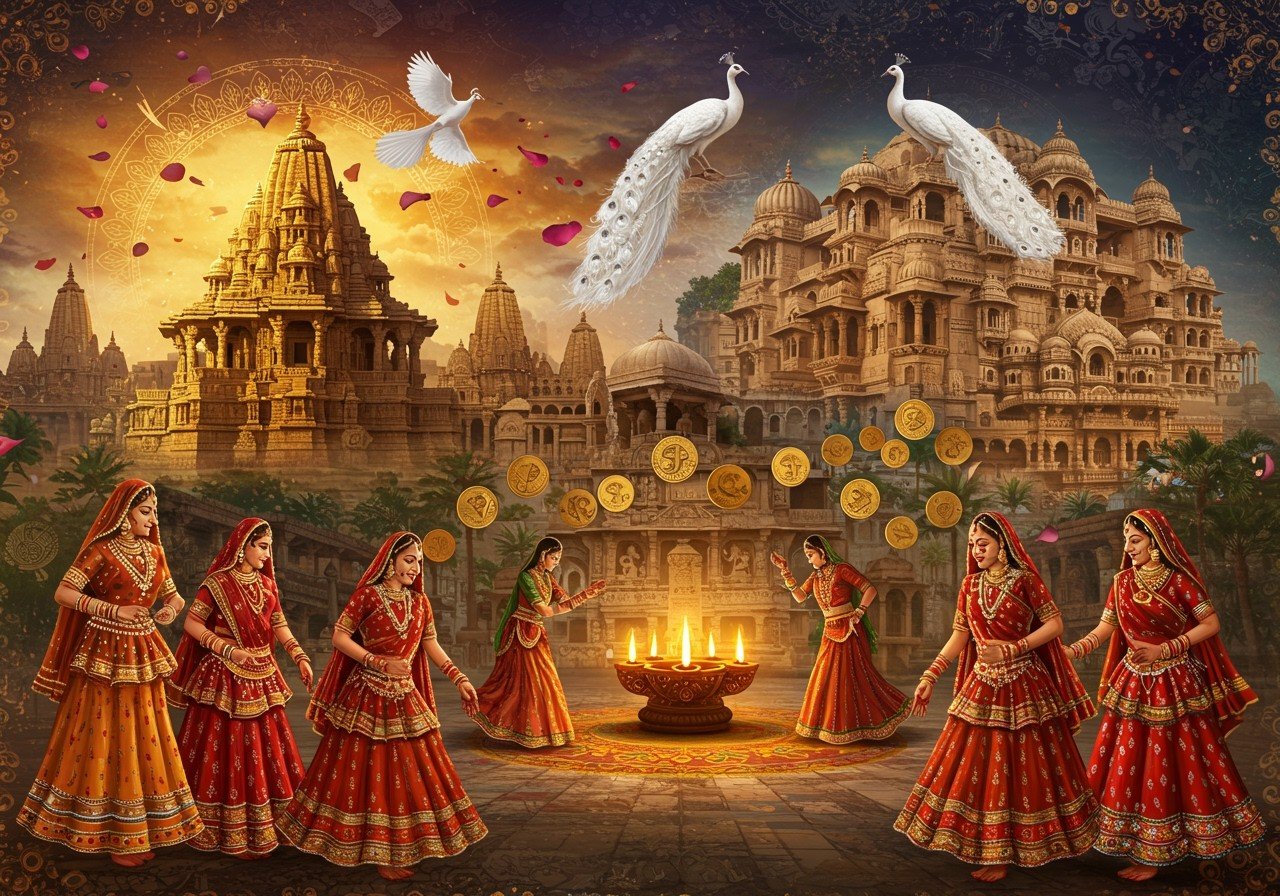
Gujarat, nestled in Western India, boasts a vibrant tapestry of cultural heritage and historical significance. For centuries, it has served as a bustling hub for trade, a cradle of diverse cultures, and a pivotal player in Indian politics. This exploration delves into the unique facets of Gujarat’s past, encompassing its ancient civilizations, the impact of colonial influences, and its crucial role in the Indian independence movement. We’ll uncover historical landmarks and artifacts that reflect the state’s captivating evolution over time.
Ancient Civilizations of Gujarat
Gujarat’s history traces back to the ancient civilizations that flourished in the region, with archaeological sites like Lothal and Dholavira standing as prominent centers of the Indus Valley Civilization (circa 3300-1300 BCE). These cities showcased remarkable advancements in urban planning, sophisticated drainage systems, and thriving maritime trade.
- Lothal: Renowned for its ancient dockyard, Lothal served as a vital port for trade with Mesopotamia, facilitating cultural exchange and economic growth during the Indus Valley Civilization.
- Dholavira: Celebrated for its ingenious water conservation system and meticulously planned urban layout, Dholavira stands as a testament to the advanced engineering and societal organization of the Indus Valley Civilization.
Evidence reveals that early human settlements in Gujarat engaged in agriculture, pottery, and tool-making, laying the foundation for the state’s rich cultural heritage.
Medieval Gujarat
During the medieval period, powerful dynasties shaped Gujarat’s historical trajectory. The Solanki dynasty, for instance, is renowned for architectural marvels such as the Rani ki Vav (Queen’s Stepwell) in Patan, a breathtaking example of intricate stepwell architecture. The Chalukya dynasty also left its mark with magnificent temples and imposing forts.
- Solanki Dynasty (c. 940 CE to 1244 CE): This era witnessed a flourishing of art, architecture, and literature, leaving behind a legacy of stunning temples, intricate sculptures, and vibrant cultural expressions.
- Chalukya Dynasty (6th to 12th century): Known for their patronage of temple construction, the Chalukyas contributed significantly to the architectural landscape of Gujarat, creating magnificent structures that stand as testaments to their devotion and artistic sensibilities.
The Gujarat Sultanate (1407-1573), ushered in an era of cultural and economic prosperity through flourishing foreign trade and the development of unique art forms. Historic monuments like the Jama Masjid in Ahmedabad exemplify the harmonious blend of Indo-Islamic architecture, reflecting the profound influence of Muslim rule on Gujarat’s cultural landscape.
Colonial Influence
The arrival of Europeans marked a significant turning point in Gujarat’s history. The Portuguese established trading ports in Diu, while British colonial rule exerted a profound impact on Gujarat’s economy, infrastructure, and social fabric. Coastal cities like Bharuch played a crucial role as trading centers during this period.
- Surat Treaty: This important agreement during British rule shaped the political and economic dynamics of the region, impacting trade relations and governance structures.
- Cultural Exchanges: The introduction of Western education and legal systems during the British Raj led to significant cultural exchanges, influencing intellectual thought and societal norms.
Resistance movements emerged, with notable figures from Gujarat bravely opposing colonial rule, showcasing the state’s indomitable spirit and unwavering pursuit of freedom.
Role in Indian Independence
Gujarat played a pivotal role in India’s struggle for independence. Mahatma Gandhi, born in Porbandar, Gujarat, spearheaded the non-violent resistance movement, inspiring millions across the nation. The Salt March, a pivotal event in the independence movement, commenced in Gujarat, galvanizing support for the cause.
- Mahatma Gandhi: Revered as the “Father of the Nation,” Mahatma Gandhi’s leadership of the non-violent resistance movement proved instrumental in India’s fight for freedom, leaving an indelible mark on the nation’s history.
- Salt March (1930): This iconic event, initiated by Mahatma Gandhi in Gujarat, became a powerful symbol of resistance against British rule, mobilizing public support and significantly impacting the course of the independence movement.
Poojn.in, India’s leading store for cultural goods and services, recognizes the deep significance of Gujarat’s heritage. Explore our collection of puja items, handcrafted with reverence and tradition, to connect with your spiritual roots. Discover authentic puja essentials on Poojn.in.
Post-Independence Era
Following India’s independence in 1947, Gujarat became a separate state on May 1, 1960, with Ahmedabad as its capital. The state has since witnessed significant economic and industrial growth. Learn more about Gujarati culture on Poojn.in.
Conclusion
Gujarat’s rich history stands as a testament to its enduring cultural and historical significance. From the ancient cities of Lothal and Dholavira to the influential dynasties of the medieval period and the impact of colonial rule, each era has shaped the state’s identity. Gujarat’s pivotal role in India’s independence movement, led by Mahatma Gandhi, further solidifies its place in the nation’s narrative. By embracing and celebrating this rich heritage, we honor Gujarat’s remarkable journey and its invaluable contributions to India’s diverse cultural tapestry.


